Estimated reading time: 8 minutes
How much land would it take to live an entirely self-sufficient life? A life so self-sufficient that you never had to leave your land? It is quite a thought-provoking question. When I was asked to write about this topic, I was immediately intrigued and began pondering variables in my head.
Because the lifestyle described in the question is our primary goal, I am going to use our homestead as not just an example, but as a way to prove my point and give a rock-solid answer about what it would take to be 100 percent self-reliant.
I spent the better part of two decades running non-stop. I was an educator by trade, but I also coached several sports, ran two youth leagues, was a local elected official, and was involved in a whole host of community groups.
Now I prefer not to leave our homesteading survival retreat any more than absolutely necessary. I love our patch of sustainable heaven on Earth, and leaving it more than once a week tends to put me in a foul mood. So, you can see why a question about how much land it would take to live a self-sufficient life truly resonated with me.
We own 56 acres of land, yet we are not entirely self-sufficient and do have to leave in order to meet some of our needs. That much acreage sure seems like enough land for a family to live on… if it boasts the right features.
Want to save this post for later? Click Here to Pin It on Pinterest!
Our survival homesteading retreat has a natural spring, a pond, a clear and running creek that has never gone dry in nearly three years, and a well. I say we can firmly put a check in the water resources column.
The property has great dirt thanks to all the livestock that have lived on it for the past 100 years or so. We have ample gardening space, a nutrient compost pile, raised beds and container gardening areas, and a greenhouse. All dirt is not created equal, so we are blessed and can put a check in the food cultivation column as well.
We grow in multiple locations both indoor and out to avoid having our entire crop wiped out by an insect infestation, flooding, drought, or inclement weather. It might seem like it would take a ton of space to garden this way, but it can be done on less than an acre if you grow vertically, use containers, and perhaps enclose a porch and turn it into a solar-powered greenhouse.
People need protein in order to remain strong and survive. Another check in the food cultivation column for us. We raise chickens, ducks, and goats, so there is a constant supply of meat, eggs, and milk. We have space ready for cattle and rabbits and have moved them to the top of the prepping budget this year.

We have barns and coops and space to build plenty more if we feel the need to increase our herd and flock populations. We could run a herd of six cattle easily and still own enough pasture and hayfields to meet their dietary needs.
We raise our own turkeys and have plenty of them–along with deer–in our woods. Sustainable land should be a mixture of wooded areas for hunting and flat space for growing crops and cultivating hay for livestock.
Oddly, possessing all of this, my weekly trip off our hill always includes a grocery store stop.
Our home, which was a hunting lodge before we bought the place and turned it into a house, came complete with a professional grade butcher shop. There is even a hoist to lift up large livestock and transport it first into the butcher shop and then into the walk-in cooler. This was a huge bonus. Having space to butcher your own meat is a requirement if you want to never leave your homestead and don't plan on living a vegetarian lifestyle.
We heat our home using a wood stove – the house came with an extra one, another added bonus. The house also came with a 2-year-old electric furnace, but we never really use it. The once-a-year hauling in of propane and all the wood in our forest allow us to heat sustainably.
We grow our own natural home remedy ingredients and are thankfully all in good health. Not one of us is reliant on a doctor’s care or prescription medication.
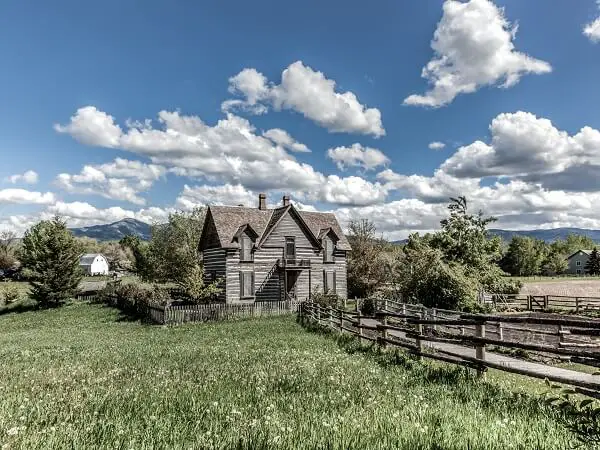
So let’s recap. We are a family of seven – counting our daughter’s family that also lives on our hill in a different home. We own 56 acres with every one of the necessary natural attributes that land must possess in order to allow a self-sustainable lifestyle.
Wow, if 56 acres won’t get it done, how much land do you need to never have to leave your land?
The answer…
Size doesn’t matter. Yep, that is right. In this likely one instance in your entire life, the size absolutely does not matter.
Confused? I am not trying to skirt the actual questions I was asked to answer – I swear.
The more I thought about the amount of land necessary and what type of natural assets it contains, I kept coming back to that same answer.
Let me explain before you shake your head in disgust and rush back to Google to find some numerical acreage answer – which will be wrong.
I know folks who can and have lived off their land and would not have to leave to get their basic needs met. One rural couple lives on less than five acres and owns land with fewer natural resources than we possess on our land.
Another acquaintance is a suburban family of four that lives on about 1/4 acre. They too grow, raise, and process enough of their own food to never have to go to a grocery store.
Yet another family friend owns 200 acres. Obviously, they are rural and are a family of nine. They do not need to leave their home except in cases of a severe medical emergency.
The amount of land each family owns varies substantially in size. So, why can they live a self-sustainable life and we cannot on our 56 acres?
It boils down to this, folks: time and skills.
Those two short words make all the difference when the parcels of land being compared all boast natural resources.
Working the land to a degree where it produces all the groceries you need takes a lot of time and skill. We have the skills we need to meet the task, but only a little more than half the time it takes to raise or grow, harvest, process, and preserve the food.
You can own any amount of resource-rich land, but if the limits on your time or skills don't allow you to work it properly, off to the grocery store you will go.
I give my husband and I an “A-” on our self-reliant skill set, our daughter a “B-” and her husband an “A-”, and I was always a tough grader. Whether we lived on 1/4 acre or 1,400 acres, we would still not be 100 percent self-sustainable as long as our time was split with outside work, there were still tools or equipment lacking, and we weren't earning a 4.0 on our skill sets.

Is it unrealistic to expect to never leave your land? Not necessarily, but you would have to live a simple life, never need surgery or chemo, and own the tools necessary to make your own fabric, thread, leather, etc. Alright, Amazon delivers, even way out in the woods where we live, so maybe you won’t have to make your own clothing material and thread, but I bet you get the point about the importance of developing a self-reliant skill set…on steroids.
I paint a stringent picture of what it would really take to live off your land, not to dampen your dreams of buying your dream homestead, but to help you avoid an epic disappointment. Or worse yet, becoming so overwhelmed or disenfranchised that you throw in the towel and go back to being an avid consumer.
Most homesteads fail because the eager and dedicated owners simply miscalculated the amount of time and knowledge required to run it. I can plant enough food to feed a family of 25 on our land, but it would all wilt and die because I wouldn't have the time to work a garden that large.
Never give up on the worthy dream of becoming entirely self-reliant. Instead, look at it as a long-range goal that will be a work in progress for many years. Every day that you are working your land, whether it is simply a corner lot in town or double-digit acres, you are improving the lives of your loved ones and preparing to survive a long-term disaster.
The skills you possess and the time you can put into your land matter far more than the number of acres on a deed.
Like this post? Don't forget to Pin It on Pinterest!
You May Also Like:

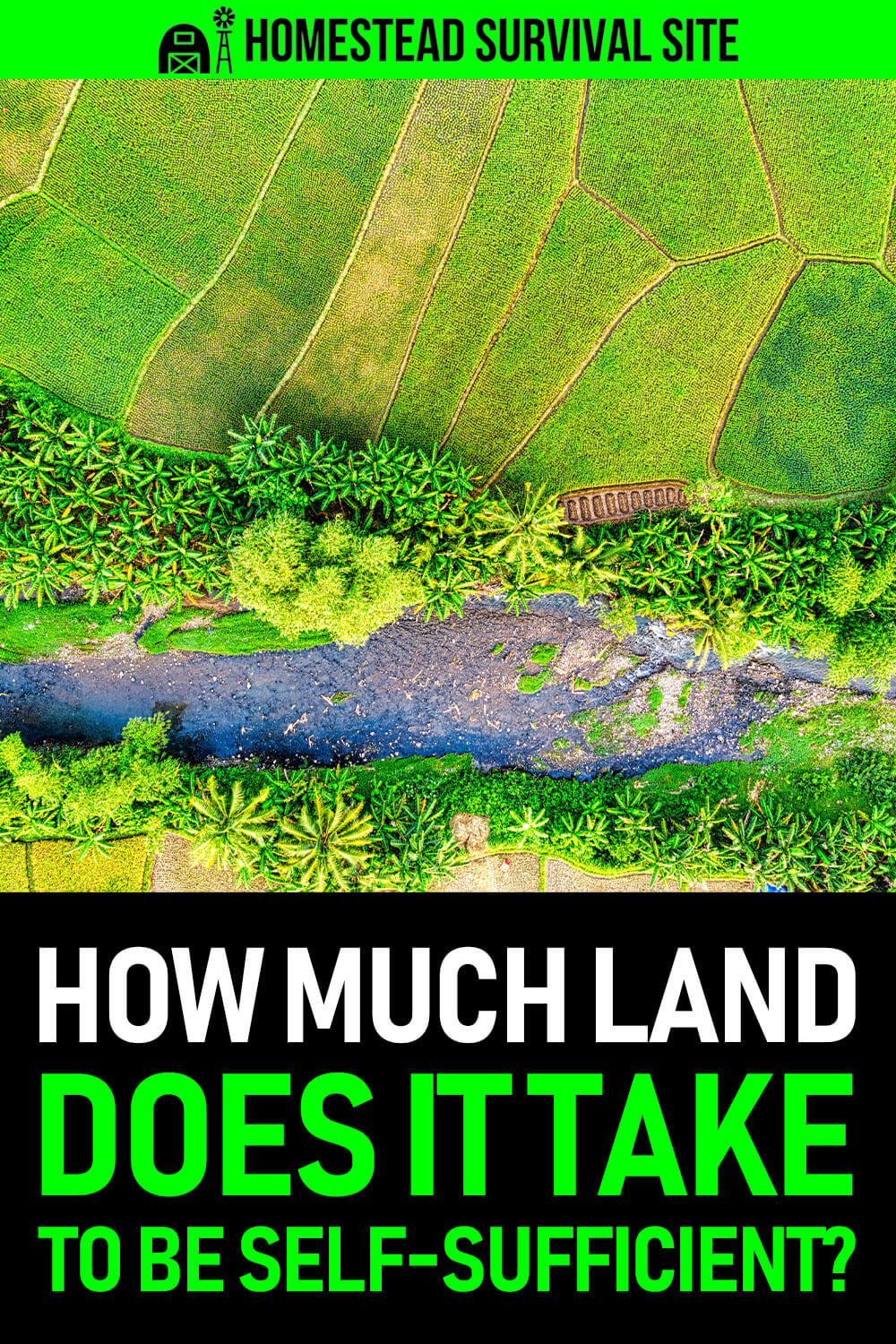


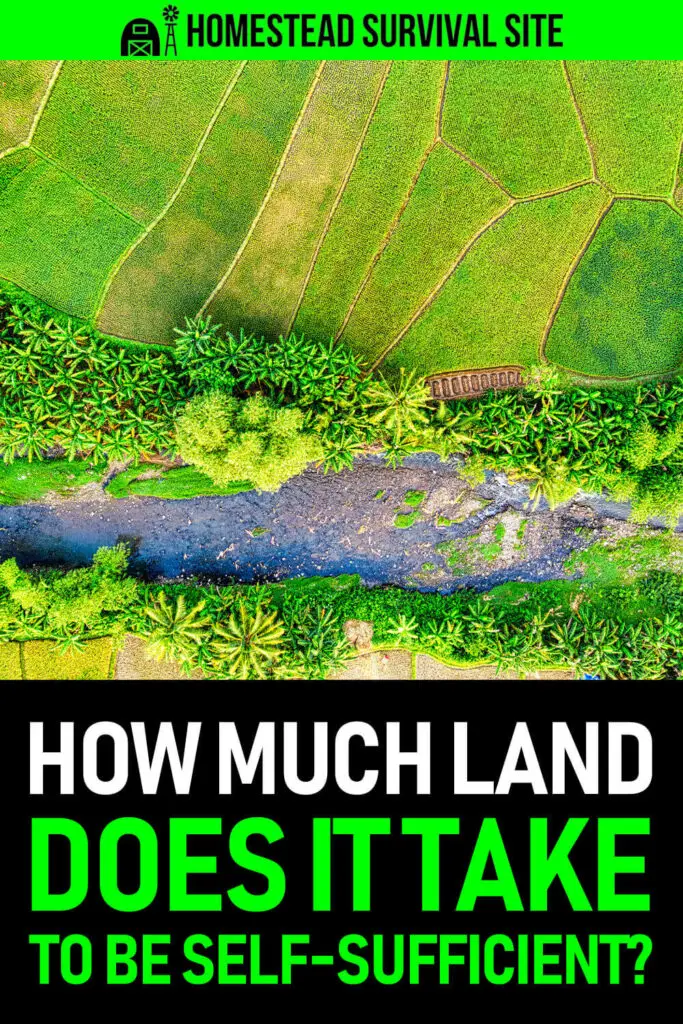


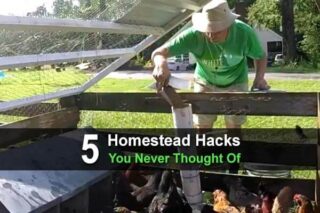
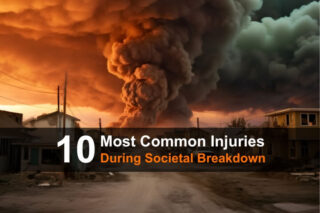
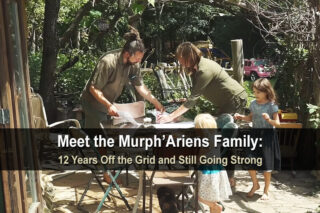
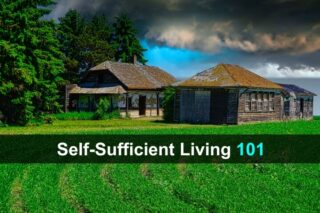


very honest and sensible advice. I have the same dream but when it comes to doing the work I am saddled with the grandkids and not an adult in sight. we are only human after all so start small and work a little more each year. establishing a homestead is the tough bit, maintenance becomes a habit.
Kootles, being a firm believer in hard work makes body and mind strong, I always brought my grandkids to help me with any chores that had to be done. So, I could teach them how it’s done, and, in the future, they can help without supervision. Then when work was done, we go frolicking in the creak looking for fish and frogs and any other critters that make them laugh and ask question about how things and stuff work. God Bless.
So true. There is no one size of property that fits everyone. Skill sets and time available for working your acreage matter a lot. Raising cattle or goats requires more land than rabbits and chickens. If you live in a colder climate and utilize wood heat, more acreage is required for your fuel supply. Traditional gardening methods require more room than planting with square foot intensive gardening methods.
We live on a 3 acre rural property and sometimes it is a lot of work just to keep up with maintenance, tending the land and working away from home all day. As the author points out, there is no one-size-fits-all answer to this question.
Mark Twain, recalling growing up in the rural 19th century South, always mentioned the never ending droning hum of the spinning wheel, just producing home spun clothing for a family was a full time job apart from actually growing and harvesting the fiber.
I have to disagree. I have calculated the amount of land needed in our area that would make it possible to be self-sufficient in all our food. We need a minimum of 120 acres, for our family of 5 and two raw fed large breed dogs. We get less than 10” of rain a year here, so no beautiful green pastures for the animals to eat means they need a large amount of land to roam, plus, there is no water all winter so we must have hay in storage. That requires space to grow that hay. Every location is going to have a minimum amount of space required to sustain animals. Most locations people are homesteading in seem to have an abundance rain, so coming from that thought process, I can see how you would think time and skills are the limiting factor, but for people without that resource, space will most definitely be the limiting factor in how many animals the property can support.
People need protein not necessarily from meat. How can you be self reliant if you are dependant on animals.Try bieng kind to them
Do you truly want to be 100% self reliant? I don’t. Spin your own fiber from your own animals? Make all your own clothing including the thread? Not buy as much as a box of salt at the grocery? I dont think for most of us it is going to be realistic. You are right. We all have limited time and skills. I think it best to pick a few things most meaningful and achievable to you and make a beginning. There is a learning curve and starting small avoids waste and disappointment. Maybe someone wants to start with a small garden, a few fruit trees and some chickens and learn to manage that well before expecting to grow all their own food. We try one new project a year if that. I love my acreage but there aren’t enough hours in the day for everything and there never will be. We have found it best to stick to the things that bring us joy and don’t see it as a failure if we aren’t totally self sufficient.
I think being self sufficient means not working off the property. How much land depends on how productive your land is. Having well watered fertile soil means you can get by with one tenth as much land as some one who has poor soil and little natural water available.
I believe there is a difference between being as self reliant vs 100% self sufficient. It’s a matter of how one wishes to use/refer to the words. Self reliant to me is having a multiple list of skills and using the resourses there are around me to to be able to do as much as possible without needing to rely on outside resources. Being able to THINK and ADAPT, I believe, is one of the most important abilities one can ever have. I know how to do basic framing of a building, concrete, roofing etc. I do not have the resources to process ore to be able to make iron/steel. That’s just a common sense realization. I had some one tell me that is part of 100% self sufficiency. I do know basic welding. It all depends how and to what degree some people like to get real finite picky about it. Overall it’s generally understood and accepted that the two basically encompass the same term. I have 3.5 acres about 1.5 with trees, a well and about 2 acres of open space that provides plenty of options for me. There are sugar maples, maybe twenty or so scattered throughout the acreage. I just might learn how to tap into them next spring and make some syrup.The greatest challenge is time and the more over the available $$$ to do what I would like to do. I bought this place 5 years ago and have made significant changes but it is just the start. I am thankfull every day when I see the chaos in the cities. So I am setting realistic goals, knowing the limits of my abilities and to never quit improving my acreage a step at a time each day.
How much land? It’s personal gradient. Some probably saw the daily in big city that was selling their wares to local restaurants. Their output of veggies was just phenomenal for the city lot they owned.For those that want to go the distance , great. Me? I’ve been a carpenter for a long long time and so a small generator is a must cuz I’m addicted to power tools! I was an military lifer, so I’m mightily blessed with pension. I will do what I can to cut or negate costs through common sense of the homestead variety. Priority right now is to negate the Google electronic footprint from our lives. That seems like the level I want to achieve in all this. Strange isn’t it?
IMPOSSIBLE TO BE COMPLETELY self sufficient!!! STOP EXAGGERATING and be realistic PLEASE!!
Dave, I don’t believe any one person can be 100% self-sufficient however if you can get yourself to a point where you do not have to rely on store bought items as much say 75% self-sustaining (lets be real, do you want to spin your own thread) that’s where neighbors and friends come in, nothing wrong with the barter system. What do you think?
Hi, I enjoyed your honesty in the article. My husband and I have been trying for a few years to get more serious about supporting ourselves and family members. We grow a small garden. Have very seriously thought about chickens and rabbits, haven’t gotten there yet. We live in a rural area, on a highway. And, for us, this works. Because, we are both in our early 70’s, with health issues (especially hubby). Anyway doing what we can, with what we have > 1/4 acre. Thanks again and God Bless you all.
Most helpful in so many ways. I haven’t yet purchased any land but have been in the hunt for some in upstate Pa. been planning my move to the woods for some time now. I have a dozen solar panels, propane generator an abundant of manual and power tools, along with some construction and mechanical skills, some garden knowledge. I do hunt and can prosses live sock. Finding the property has been my biggest challenge as yet. Wish me all the luck I’ll need. Thank You.
The protein standards according to research and studies are actually about 2 x too high because the body has no way of storing excess protein. The kidneys have to deal with it and thus become over burdened. Anatomically the human body is not designed to eat meat. The Tapans in Europe lived entirely on potatoes, worked hard and long hours. They showed no sign of protein deficiency.
Protein for strength and endurance? Actually a low protein fresh plant based diet is the way to health.
The unbeatable SPARTANS were not carnivores the way Hollywood depicted in the movie, 300 Spartans where they were shown chewing on a chicken leg. The Spartans were strict vegetarians,
a staple being the alkaline forming grain millet. When healthy we are alkaline. Sore muscles is excess lactic acid. So we have sore muscles, we ache, are tired, sick or dead. That is acid to extreme. All fruit and vegetables are alkaline forming, even citrus which contain ascorbic acid.
A renowned heart surgeon from Florida, Dr. Michael Klaper, stated it was easy to get any disease –
simply eat a lot of meat and mucus forming dairy.
Bottom line on protein for muscle size and strength — Look at the strongest and biggest animal in the world. Nothing much messes with it – the elephant. It is not carnivore by any means.